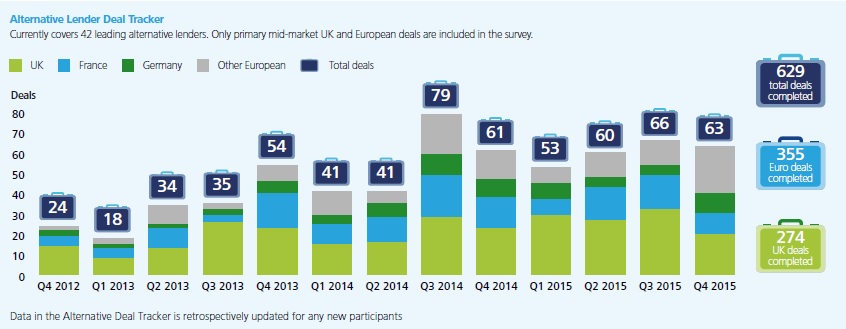The search for yield: Opportunities in private debt
From the blog: As global markets have taken a beating since June 24, pension funds are likely to be wondering where they should look for safer returns that answer the search for yield.
Increasingly they are turning to private debt – regrouping real estate debt, infrastructure debt, corporate private debt and direct lending – a burgeoning asset class that offers significant opportunity, particularly in Europe.
Private debt has been an impressive growth story in Europe, exploding in size since the financial crisis.
It will come as no surprise that in private debt as elsewhere, fees are a focal point
Post-2008, banks have reduced their level of debt financing and redirected funds to more established borrowers – depriving, for example, many middle market companies of the growth finance they require.
Hence the growth of debt funds that have stepped in to fill the void.
Deal flow in Europe has surged as a result: Deloitte’s Alternative Lending Tracker counts 242 mid-market deals in 2015 versus 141 in 2013, a 72 per cent increase.
Source: Deloitte
The good news is that large reserves of untapped demand for debt continue to sustain higher yields, and the safety and predictability of these returns is the major attraction for pension funds.
Pension schemes can target pure yield by selecting managers offering a broader asset mix.
Those who include subordinated debt in their asset mix, as well as some equity, can raise their expected internal rate of return above a 5 per cent to 10 per cent range.
Adding leverage to traditional senior and unitranche managers can also carry the IRR range into the low teens.
It will come as no surprise that in private debt as elsewhere, fees are a focal point.
With pension deficits ballooning and a general crackdown on fees by institutional investors, there are downward pressures on fees that open up attractive deals.
That said, individual schemes may have specific needs regarding liquidity and liability matching. It’s sometimes a case of ‘you get what you pay for’, with fees rising the more tailored the offering is – careful manager selection therefore becomes key.
A major question is whether to allocate to the larger US market or to Europe. Partly, this is a risk/return trade-off: yields are lower in the more established US market, but funds tend to exhibit a longer track record.
The flipside is that when established managers raise a third or fourth fund, existing investors roll over their investments, which means you can’t negotiate advantageous deals on fees as readily as in Europe.
With current European uncertainty threatening to delay vehicles deploying capital, however, that may be a price worth paying.
Niels Bodenheim is director of private markets at consultancy bfinance
Most Viewed
- What does Labour have in store for the pensions industry?
- LGPS latest: GLIL backers invest £475m for UK infrastructure push
- Dashboard costs rose by 23% in 2023, figures show
- Border to Coast launches UK strategy in major private markets push
- How the pensions industry can better support people with mental health problems


